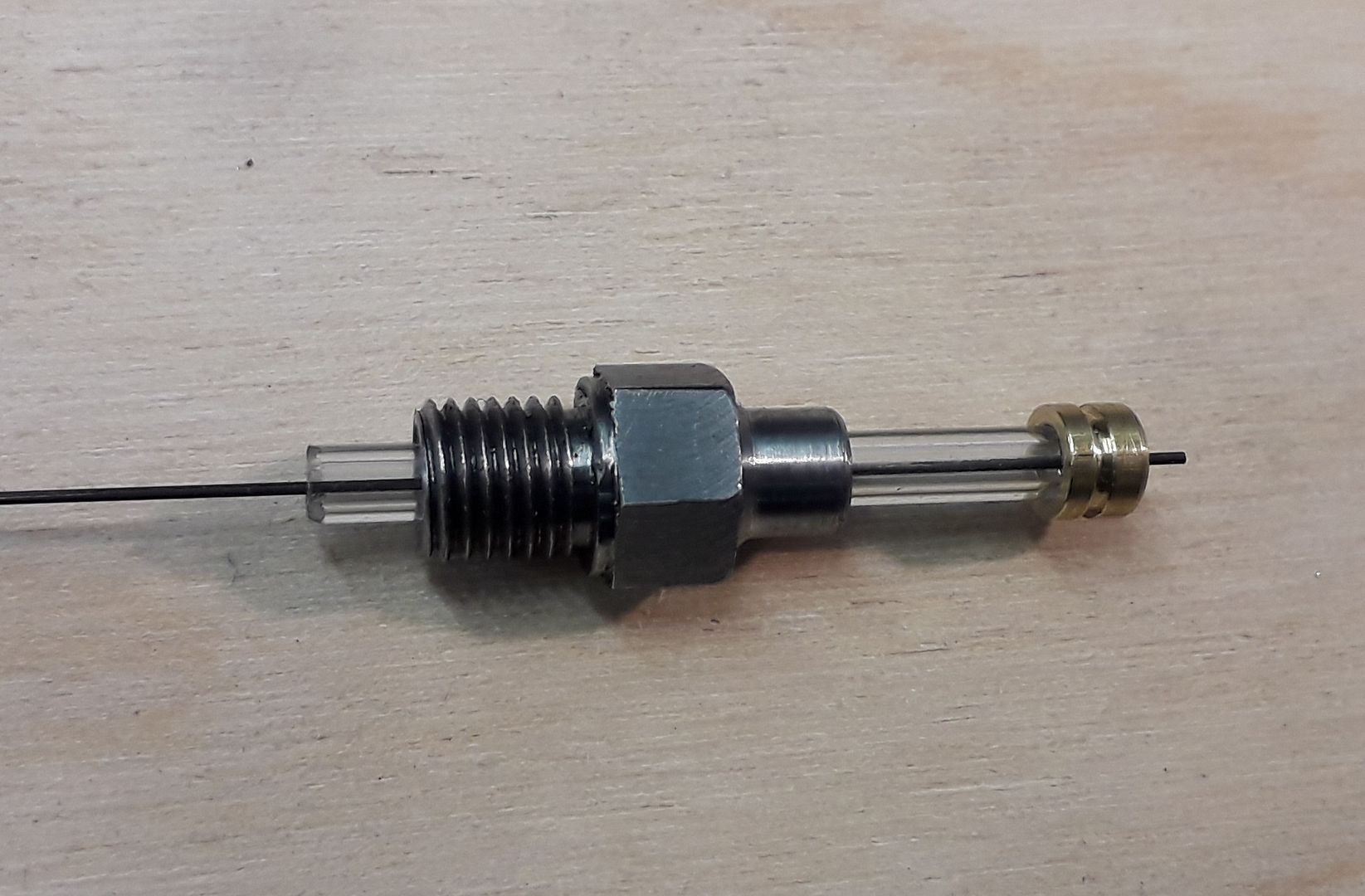- Joined
- Feb 17, 2008
- Messages
- 2,330
- Reaction score
- 446
Thanks for the comments. All are welcome. If you have a different way of doing things please post them.
I apologize for the time lapse in this thread. Life has a way of getting in the way of playing with toys.,
There are a couple of ways of cutting the OD of the washers. The first way that I will illustrate takes the least amount of tooling but is slow to make the washers. Still it OK for a dozen or washers. A mandrel is made from 1/4 diameter rod by turning the end down to a smooth sliding fit on the ID. Make spud about 1/2 inch long and keep the inside corner sharp. A clamping sleeve is made out of the same material. It is about a 1/4 inch longer than the spud, about 3/4 inch long. It is drilled through so it is a sliding fit on the spud. Face off both ends so they are square and sharp.
The washer blanks are rough cut out with metal snips and then the corners are nipped off.

Here is the rough cut washers but the corners have not been cut.

The blanks are loaded on the mandrel. Up to a dozen can be put on at once. I have put on 6 in the photos. As copper does not machine well so the blanks are filed to be sort of round and then turned to about .005 over size. The copper will have smeared enough that the washers will be stuck to each other. Removing the last 0.005 with a file will remove this smearing so the washers will separate.



Gail in NM
I apologize for the time lapse in this thread. Life has a way of getting in the way of playing with toys.,
There are a couple of ways of cutting the OD of the washers. The first way that I will illustrate takes the least amount of tooling but is slow to make the washers. Still it OK for a dozen or washers. A mandrel is made from 1/4 diameter rod by turning the end down to a smooth sliding fit on the ID. Make spud about 1/2 inch long and keep the inside corner sharp. A clamping sleeve is made out of the same material. It is about a 1/4 inch longer than the spud, about 3/4 inch long. It is drilled through so it is a sliding fit on the spud. Face off both ends so they are square and sharp.
The washer blanks are rough cut out with metal snips and then the corners are nipped off.

Here is the rough cut washers but the corners have not been cut.

The blanks are loaded on the mandrel. Up to a dozen can be put on at once. I have put on 6 in the photos. As copper does not machine well so the blanks are filed to be sort of round and then turned to about .005 over size. The copper will have smeared enough that the washers will be stuck to each other. Removing the last 0.005 with a file will remove this smearing so the washers will separate.



Gail in NM

























































![MeshMagic 3D Free 3D Modeling Software [Download]](https://m.media-amazon.com/images/I/B1U+p8ewjGS._SL500_.png)


![DreamPlan Home Design and Landscaping Software Free for Windows [PC Download]](https://m.media-amazon.com/images/I/51kvZH2dVLL._SL500_.jpg)



